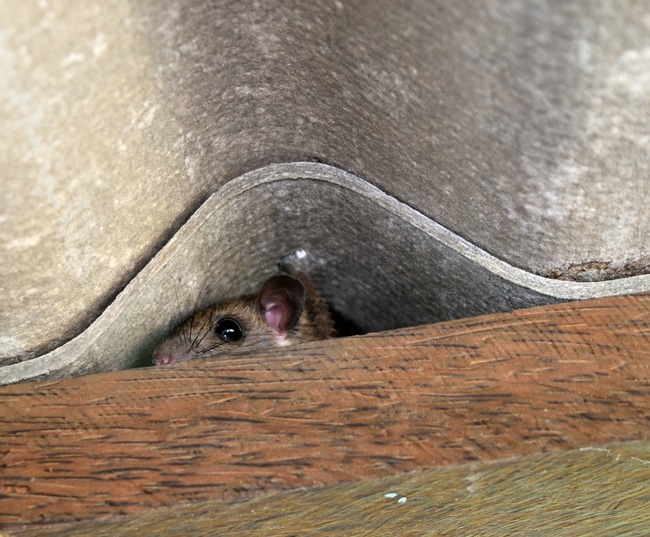![]() Phoenix, Arizona: 602-932-1623
Phoenix, Arizona: 602-932-1623
![]() Phoenix, Arizona: 602-833-1185
Phoenix, Arizona: 602-833-1185

October 4, 2021
Have you heard tiny scratching noises in the ceiling? Perhaps you have seen holes in the attic insulation? These signs may indicate that your home has roof rats. Roof rats may pose a serious danger to your home. At Diversified Roofing, we understand how important it is to protect your belongings and yourself from pests. Let’s learn more about these rodents, how to get rid of roof rats in Arizona, and how we can help repair the damage they may have caused to your home.
Roof rats are rodents that are about 40cm long. They are either brown or black in color and have very poor eyesight. The rodents have hairless tails longer than their bodies, pointed noses, and big ears and eyes. These rats love to climb and stay in high places. They are normally found in the upper parts of the building.
When roof rats gain entry into the home, they may cause significant damage. The rodents may chew through electrical wires and rip up insulation. Once they chew their way into your home, the hole they made into the roof allows water to enter. This water may eventually rot out rafters and roof supports. It could significantly damage the roof system. In addition, the water may enter insulation and behind drywall.
Roof rats may damage any furniture, boxes, or other items stored in the roof or higher floors inside your home. Not to mention the rodents could carry and transmit diseases to people through their bites, feces, urine, or fleas and parasites.
Coming across a live or dead roof rat may be the surest indication that they are in your home. Other signs of roof rats include:
Roof rats typically feed on nuts, berries, grains, tree bark, seeds, and meat. Once building a nest, a female rodent may produce 40 new rats in a year. If wondering about how many roof rats live together, typically a nest will hold 5 to 10 rats at one time. Roof rats live for roughly one year.
Finding them early allows you to get rid of the roof rats before they breed as well as fix the damage they caused.
Roof rats are excellent climbers even though they have poor eyesight. They may travel along tree branches, fence posts, and utility wires. To prevent their entry in your home, you want to eliminate how they may reach the upper floors of the building.
Any trees close enough to the home will allow a roof rat to reach the nearest wall and get inside. They may jump from overhanging branches down to the roof where they can get into gaps under the shingles. Cut back all tree and shrub branches so they do not touch the side of the house or hang over the roof.
Roof systems will have vents for attic ventilation. There may also be vent pipes for bathroom plumbing and furnace exhaust. Along the sides of the house may be vent pipes for dryers and natural gas water heaters. Placing vent covers and stainless steel mesh may prevent the rodents from entering. You could also extend vent pipes to make it more difficult for the roof rats to climb inside.
Roof rats can enter holes that are roughly one-half inch in diameter. If there are old windows that have warped sills or board housing, the rodents will wedge themselves through those tiny spaces and enter. Replacing rotted wood and cracked siding can eliminate entryways. Then caulk around windows and place on screens to offer additional barriers.
Rats may chew through wood, drywall, and siding to enter. If there are cracks anywhere along the shingles, they will chew the cracks big enough to enter. Our qualified staff at Diversified Roofing can perform roof inspections to help spot the places where the rodents are entering. Getting roof repair or replacement can seal the entrances completely.
Birdbaths, bird feeders, and garbage cans set up close to the house may lure roof rats to those locations. Placing the items further away may deter them from entering. If you own fruit trees, clean up fallen fruit periodically to prevent pests from setting up a home in the yard. If there are any outdoor water and food dishes for pets, relocate them to a place where roof rats can’t reach. Ensure any pet food is placed in sealed containers.
Roof rats do not have to be a serious problem. Sealing up entry points along the roof, cutting back tree branches, and eliminating food sources can prevent them from entering your home. If you suspect damage to your roof from roof rats, contact Diversified Roofing right away.